Windows Phone Camera Faceoff: Nokia Lumia 920 vs HTC Titan II
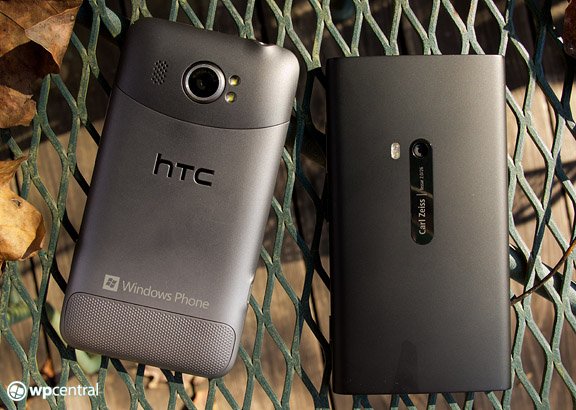
The past two generations of Windows Phones have produced two innovative cameras. The 16mp camera on the HTC Titan II and the 8.7MP camera on the Nokia Lumia 920.
Both cameras are similar in that they use a back lighted sensor (BSI) that gives both cameras an edge with low light photography. The Titan II has the greater resolution and digital stabilization. The Lumia 920 has a faster lens (f2.0 vs the Titan's f2.6) and optical stabilization.
But does one of these Windows Phone camera giants have an edge as far as image quality is concerned?
A few more spec comparisons before we get into the nitty gritty.
- The HTC Titan II has a 16mp BSI sensor with digital stabilization. The Titan II utilizes a 28mm f2.6 lens.
- The Lumia 920 has a 8.7mp BSI sensor with optical stabilization. The Lumia 920 is fitted with a Carl Zeiss 26mm f2.0 lens.
The Titan II has the edge with regards to menu controls that include scenes, effects, smile capturing, face detection, resolution, white balance, brightness, contrast, saturation, sharpness, ISO, red eye reduction, image stabilization, metering, and flicker adjustment. The Titan II also has Panorama and Burst modes.
The Lumia 920 pales in comparison with controls over scenes, ISO, Exposure compensation, white balance, aspect ratio, and the focus assist light. You do have access to a panorama, cinemagraph, and smart shoot features from Nokia that are accessible through the camera's lenses feature.
While the HTC Titan II has the most flexibility with regards to settings and resolution, the Lumia 920 has one advantage that is tough to beat, optical stabilization. While the Titan II does have digital stabilization it is not as effective as optical stabilization. Digital stabilization basically boosts the camera's ISO to allow for a faster shutter speed. The faster the shutter speed, the less influence camera motion has in blurring your photo.
Get the Windows Central Newsletter
All the latest news, reviews, and guides for Windows and Xbox diehards.
Optical stabilization on the other hand is more mechanical in nature. Springs, motors or other form of mechanics stabilize the sensor. The end result is that slower shutter speeds can be used and motion blur caused by camera movements reduced if not eliminated. Optical stabilization isn't going to prevent motion blur if you're jumping up and down but deals more so with movements caused by breathing, hand fatigue or other slight movements.
Now to the image quality. We captured the test photos from both cameras using the default settings except one, the aspect ratio on the Lumia 920. We set that to 4:3 to match the aspect ratio of the Titan II.
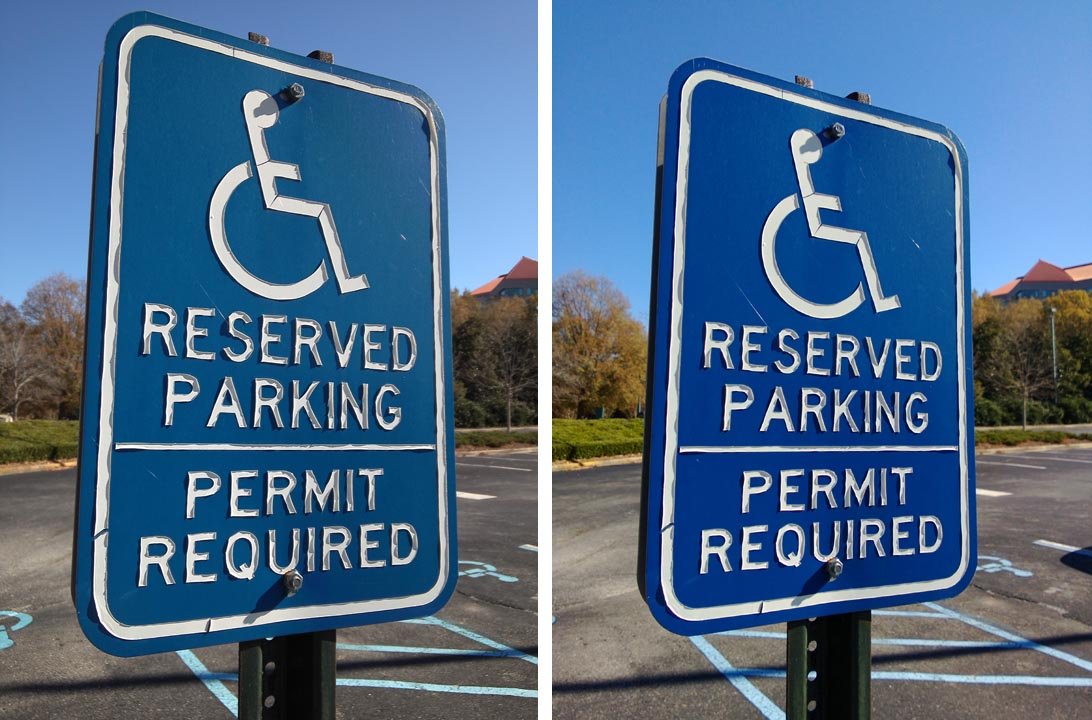
HTC Titan II (left) and Nokia Lumia 920 (right) Outdoor Test Shot
These two Windows Phone cameras are solid performers. We'll give the Titan II and edge with regards to sharpness but the Lumia 920's images were better exposed and slightly warmer with better color. However, the Titan II did handle some indoor lighting better with warmer tones (check the indoor lumber shot). But this isn't uncommon for different indoor lighting types to effect the white balance of cameras differently (see the change in the indoor lamp shot).

HTC Titan II (top) and Nokia Lumia 920 (bottom) Indoor Test Shot
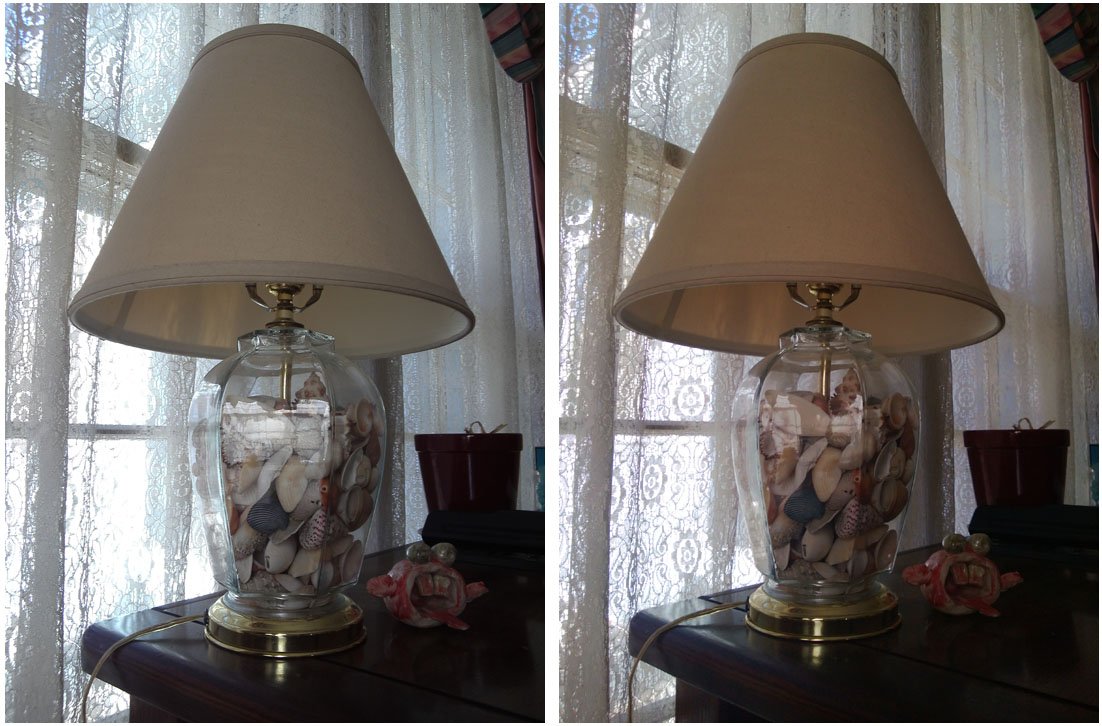
HTC Titan II (left) and Nokia Lumia 920 (right) Indoor Test Shot
Outdoor shots were nice with both cameras but I did find the Titan II had trouble with exposure at times. This wasn't a consistent issue but appeared every now and then. The bright sun created a glare on the Gnome but the white light globes had no glare. Colors were across the board warmer and more accurate with the 920. While the Titan II performed like a trooper, the colors appeared more cooler with a touch of a blue color cast present. Nothing critical but noticeable.

HTC Titan II (left) and Nokia Lumia 920 (right) Outdoor Test Shot
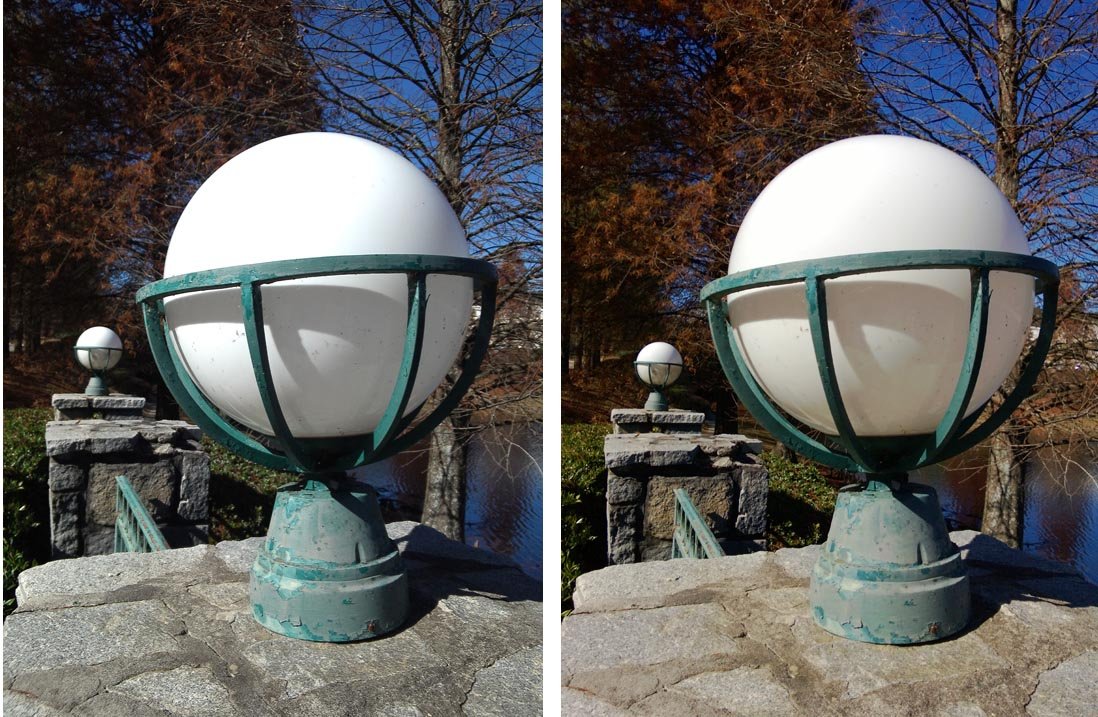
HTC Titan II (bottom) and Nokia Lumia 920 (top) Outdoor Test Shot
Low light photography was a tough one to judge. Both cameras have BSI sensors that pulls in more light. The Titan II performed really well indoors but at night, you can see the advantages the 920's optical stabilization has. There was less blurring with the 920 at night than with the Titan II. An interesting observation with these two cameras and night time shots, the Lumia 920 shot the below photo at ISO 800 and a shutter speed of .3 seconds. The Titan II on the other hand shot the same photo at ISO 1015 and a shutter speed of 1/7th second. The optical stabilization clearly allows the 920 to use slower shutter speeds without the need for higher ISO speeds.
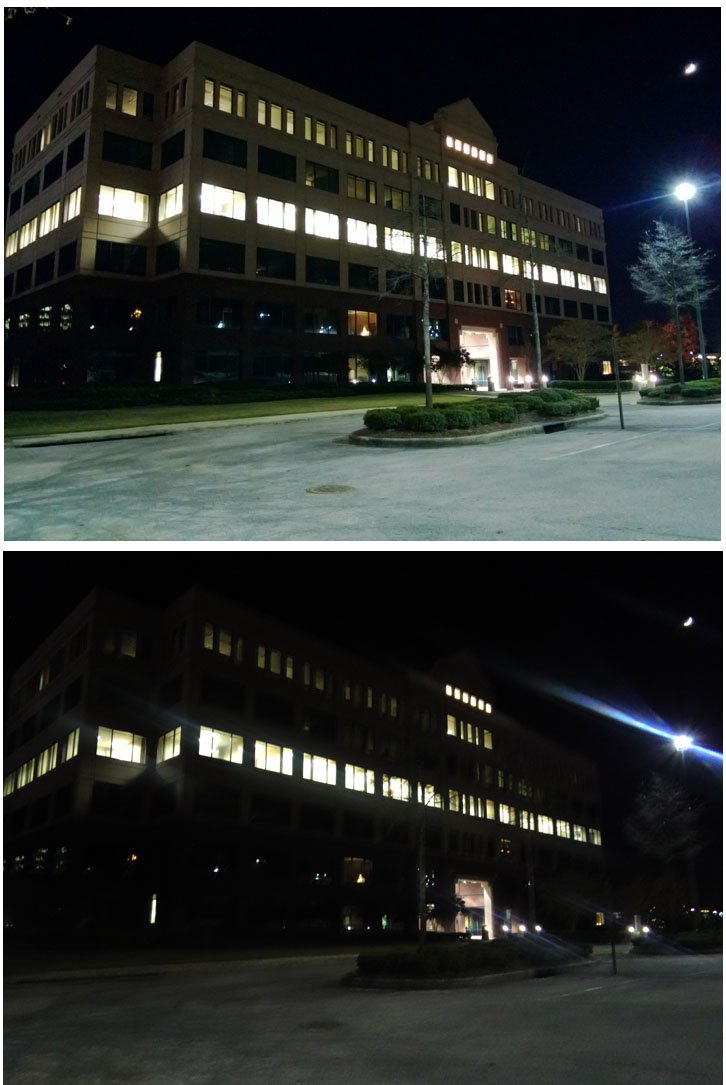
HTC Titan II (bottom) and Nokia Lumia 920 (top) Night Test Shot
Even when light is more ample, the Titan II relies on higher ISO ratings. This next shot was taken with the 920 using ISO 640 and a shutter of 1/6th second. The Titan II used ISO 1015 and a shutter speed of 1/7th of a second. Even though the Titan II has the BSI sensor it relies on higher ISO levels for night time shots. It works but the higher ISO could generate more image noise (or grain) that could cause a decline in image quality.
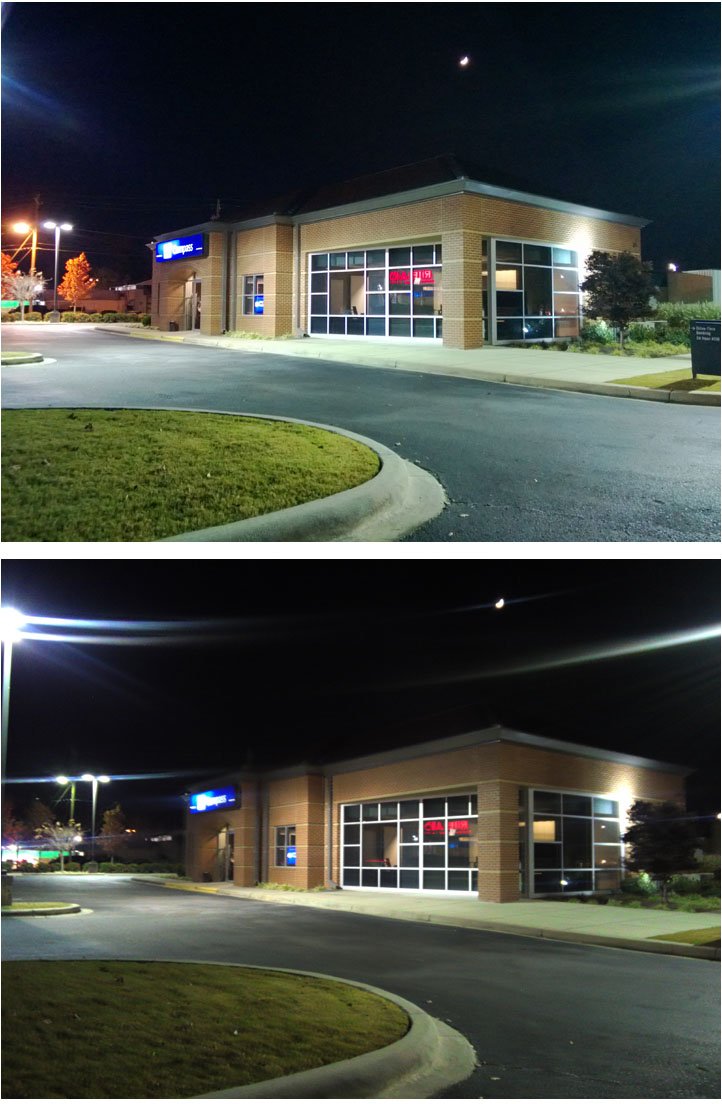
HTC Titan II (bottom) and Nokia Lumia 920 (top) Night Test Shot
Based solely on the camera, it was a difficult choice between these two cameras. Image quality was good on both and the Titan II has the edge with regards to settings and sharpness. But the optical stabilization on the Lumia 920 was the determining factor. We still think the world of the Titan II's camera but the OS is an innovation that really sets a camera apart and gives the 920 an edge over other Windows Phone cameras. The slight softness we see with the 920 can be corrected. Motion blur that the lack of optical stabilization causes can't.
Is it worth moving from the HTC Titan II to the Nokia Lumia 920? I don't think you can make that choice based solely on the camera. You would have to consider the differences between Windows Phone 7 and 8, the differences between how HTC and Nokia on how they support Windows Phones, and design features. The best answer we have is that if you're moving from the Titan II to the Lumia 920, you won't be disappointed with the camera's performance.
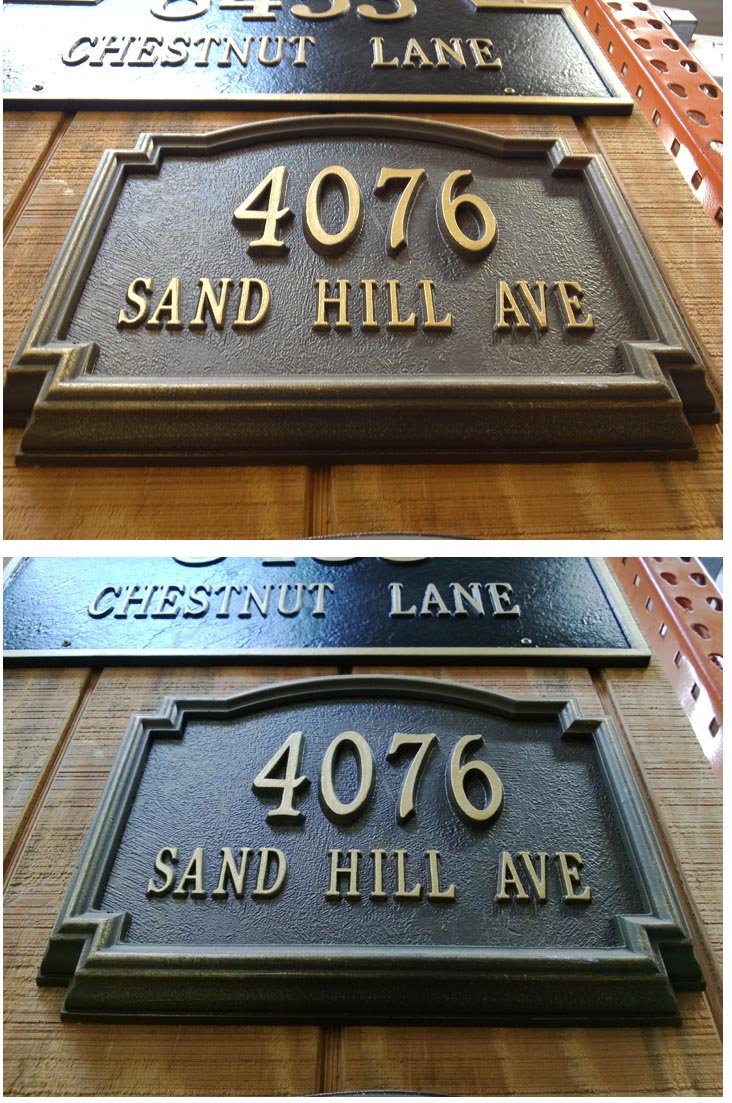
HTC Titan II (top) and Nokia Lumia 920 (bottom) Indoor Test Shot

HTC Titan II (left) and Nokia Lumia 920 (right) Outdoor Test Shot
George is the Reviews Editor at Windows Central, concentrating on Windows 10 PC and Mobile apps. He's been a supporter of the platform since the days of Windows CE and uses his current Windows 10 Mobile phone daily to keep up with life and enjoy a game during down time.

